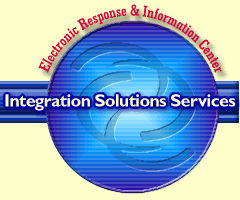Wireless LAN ROI / Cost-Benefit Study conducted
by the Wireless LAN Alliance (WLANA)
SUMMARY OF RESULTS
This Wireless LAN Cost of Ownership study was focused
on the results of a detailed end-user survey to identify cost of
ownership and tangible and intangible gains in using wireless LAN
technology. This study was conducted with wireless LAN users in
the following industries:
- Education (In-building K-12 and
University/College connectivity)
- Healthcare (Point of Care)
- Manufacturing
- (Production/Distribution/Maintenance/Shipping/Receiving)
- Retail (Point of Sale)
- Financial/Office -Automation (Stock Exchange, Banking, Consulting)
MAJOR FINDINGS
It is apparent that the technology is taking its place
as a viable alternative and/or complement to wired LANs and for
new strategic applications.
- 89% of the companies experienced a
successful implementation.
- 92% of respondents interviewed believe
there is a definite economic and business benefit after
installation.
- 92% of respondents reported that they
would continue to deploy wireless technology in their network
through 2000 because of the benefits experienced by end users
and/or IT staff.
- Payback was less than one year, across all industries surveyed.
COST OF OWNERSHIP
On average, the total cost per user was found to be
$4550 for a wireless LAN solution. This includes the costs identified
below (Note that the WLAN Hardware/End User Devices category includes
the computing platform used, which was generally a handheld or laptop
computer.) The percentages for wireless LAN expenses, by category,
were as follows:
- WLANA Hardware/End User Devices: 50%
- Monthly expenses: 1%%
- Management expenses: 16%
- Application development expenses: 16%
- Outsourcing: 16%
- *Downtime: 1%
ECONOMIC BENEFITS
With large investments in wireless LAN technology
at approximately $300,000 to $4.2 million dollars per year, we clearly
realize and sympathize with the managers that have been struggling
to quantify the benefits that derive from wireless LANs. Organizations
implementing an average of 300 client cards reaped annual savings
of up to $4.9 million, which translated into per user savings of
$15,989.
PAYBACK
Across all industries, the wireless LAN paid for itself
within 12 months time. This is with all economic benefits considered.
The payback period of this investment is the period of time required
for the cumulative cash flows due to increased productivity, organizational
efficiency and extra revenue/profit gain to equal the initial investment.
| |
Retail
|
Manufacturing
|
Healthcare
|
Office
Automation |
Education
|
| Benefits per
company(mil $) |
5.6 |
2.2 |
0.94 |
2.5 |
0.5 |
| Costs per
company(mil $) |
4.2 |
1.3 |
0.90 |
1.3 |
0.3 |
| Payback (# of
months) |
9.7 |
7.2 |
11.4 |
6.3 |
7.1 |
SURVEY RESPONDENTS
The breakdown of participants by industry was:
- Education: 23% (8)
- Healthcare: 23% (8)
- Manufacturing/Warehouse: 21% (7)
- Retail: 15% (5)
- Financial/Office Automation: 18% (6)
This study primarily features customers who have wireless
LANs installed at one or more sites and had completed deployment
or were still in the process of upgrading.
ABOUT WLANA
The Wireless LAN Alliance (WLANA) is a non-profit
industry trade association formed to increase awareness and encourage
the adoption of wireless LANs products and technologies.
The Alliance maintains an educational web site at
www.wlana.com with industry white papers, end-user case studies and
links to related topics and member web sites.
Members
The Wireless LAN Alliance
membership is comprised of 11 leading worldwide suppliers of
wireless local area networking products and technologies.
| 3Com Corporation |
www.3com.com |
| Aironet |
www.aironet.com |
| Bay Networks |
www.netwave-wireless.com |
| BreezeCom |
www.breezecom.com |
| Cabletron Systems, Inc. |
www.cabletron.com/wireless |
| Harris Semiconductor |
www.semi.harris.com |
| Intermec Technologies, Inc. |
www.intermec.com |
| Lucent Technologies |
www.wavelan.com |
| Proxim, Inc. |
www.proxim.com |
| Raytheon Wireless Solutions |
www.raylink.com |
| Symbol Technologies |
www.symbol.com
|
Return to Systems
Solutions
Return to ROI
Study
|
